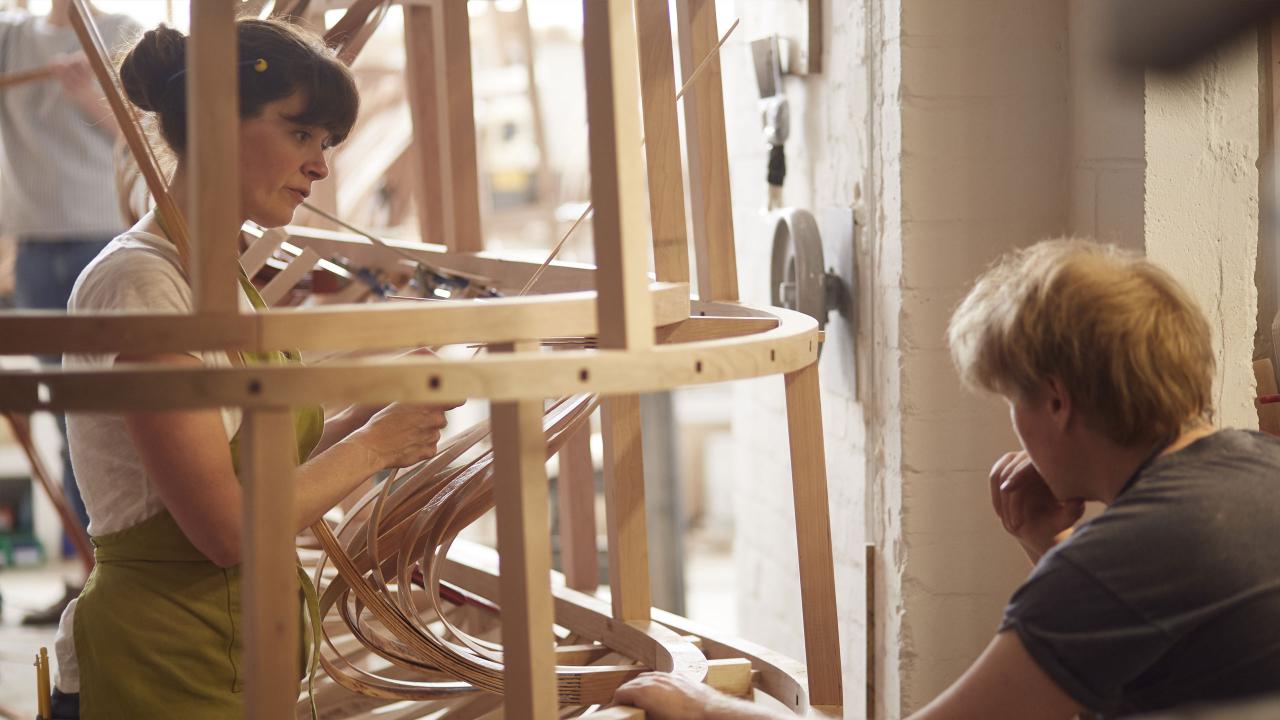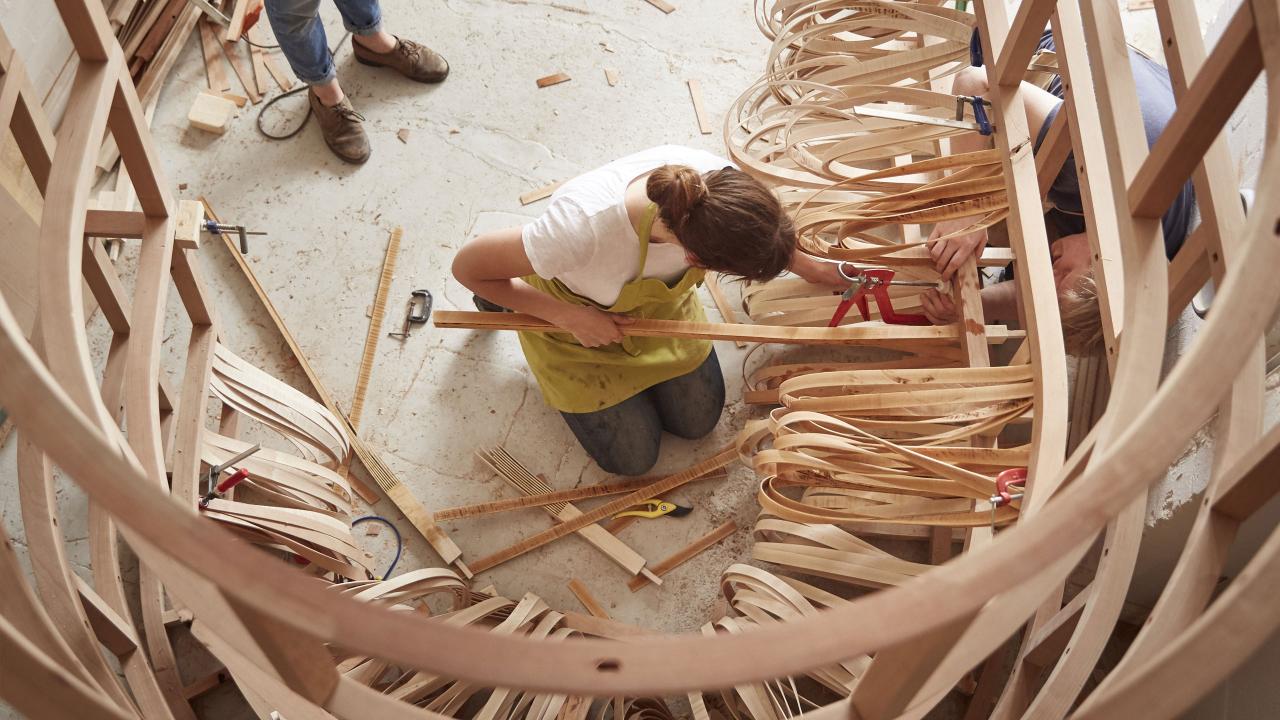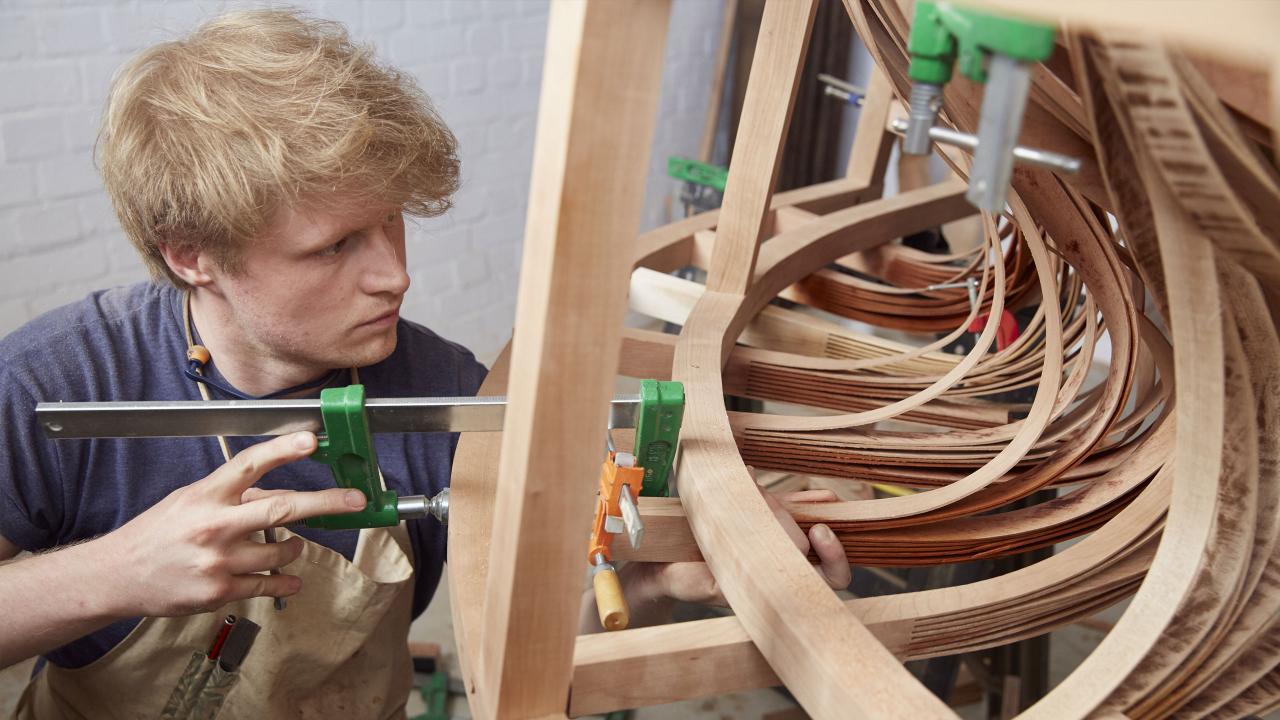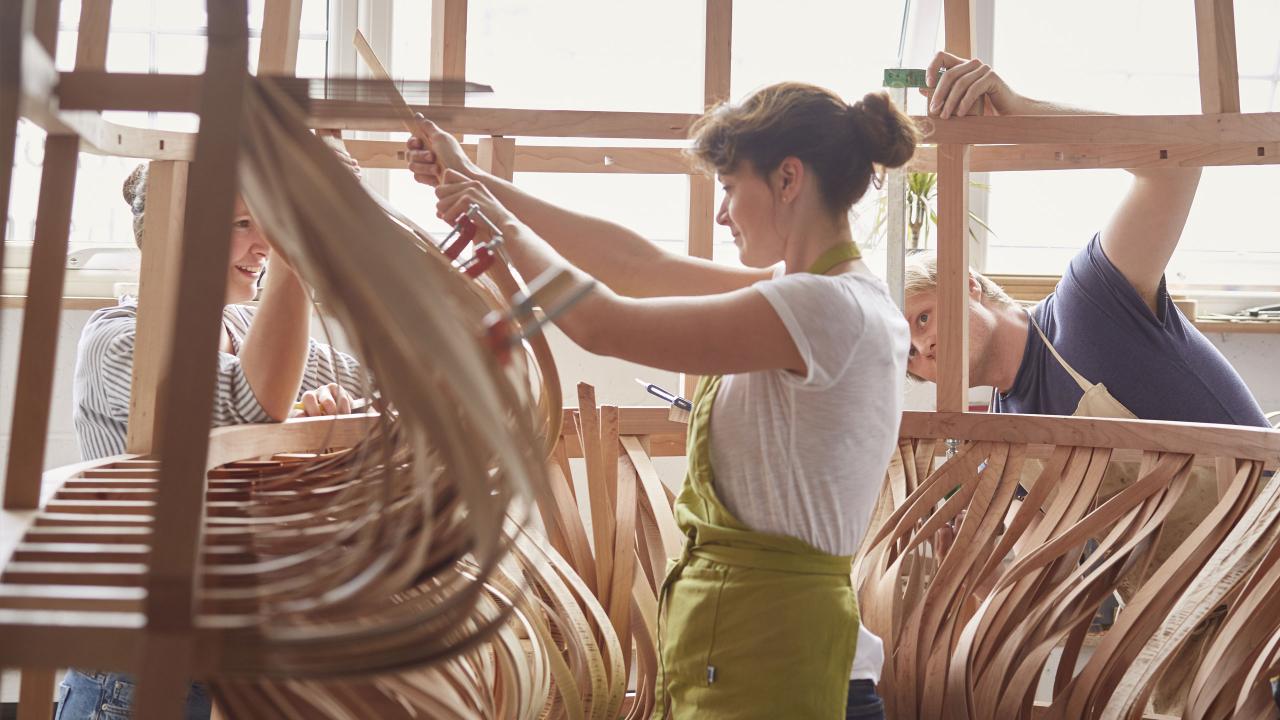Making
'One of the challenges for wood right now is embracing innovation and we’re learning all the time. We could write a manual on steam-bending hardwood as an outcome of this project,' says AHEC's European director David Venables.
An added challenge was that until the wood came off the boat from America, the designers simply didn’t know what they had to work with. 'We had to design this thing to make sure it worked with whatever lengths, whatever grades of timber arrive. And that is an important point. Of all the wood that grows in the forest, you can’t only take the sweet stuff – you’ve got to use some sap wood, some shorter lengths, some not so straight bits,' says Sebastian.
Although Sebastian Cox and Laura Ellen Bacon were the lead designers on the Invisible Store of Happiness project, they worked with a team, meeting the design challenges together of making it happen. It took two weeks just to produce the raw material the team are working with. And every time a machine is switched on, so is a stopwatch.
Data sheets list the amount of CO2 used by each machine per hour, enabling the team to calculate the total carbon cost of the project. 'I can’t wait to meet the AHEC lifecycle analysis team to review the data,' says Cox, visibly excited. The timber for the interior ‘swathes’ is cut using a spindle-moulder and a stack of spinning circular blades. Slots are cut parallel to the length of the timber, resulting in pliable wooden ribbons attached to the uncut end.
The ribbons are soaked in water to mimic the green wood traditionally used for steam bending, and steamed to make them flexible enough to shape by hand. 'They’re really nice, and coincidentally feel quite similar to the willow I often work with,' says Bacon. The wood will be attached to the frame with a mortise and tenon joint at one end and anchored into slots in the structure at the other. 'I want to twist and flex each one as much as I can without breaking it,' she says. 'Some won’t bend very far at all and some will bend much further – creating a real sense of volume and movement.'





